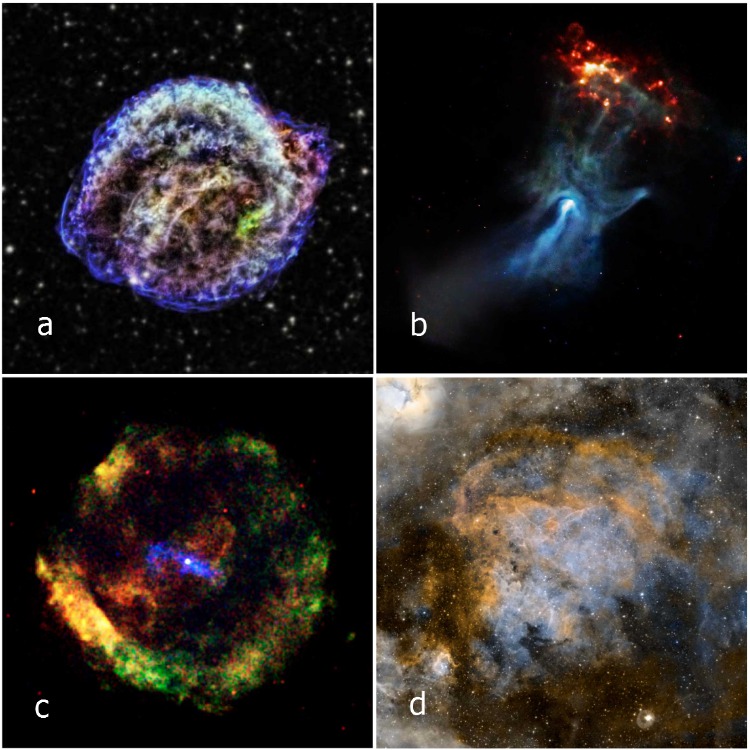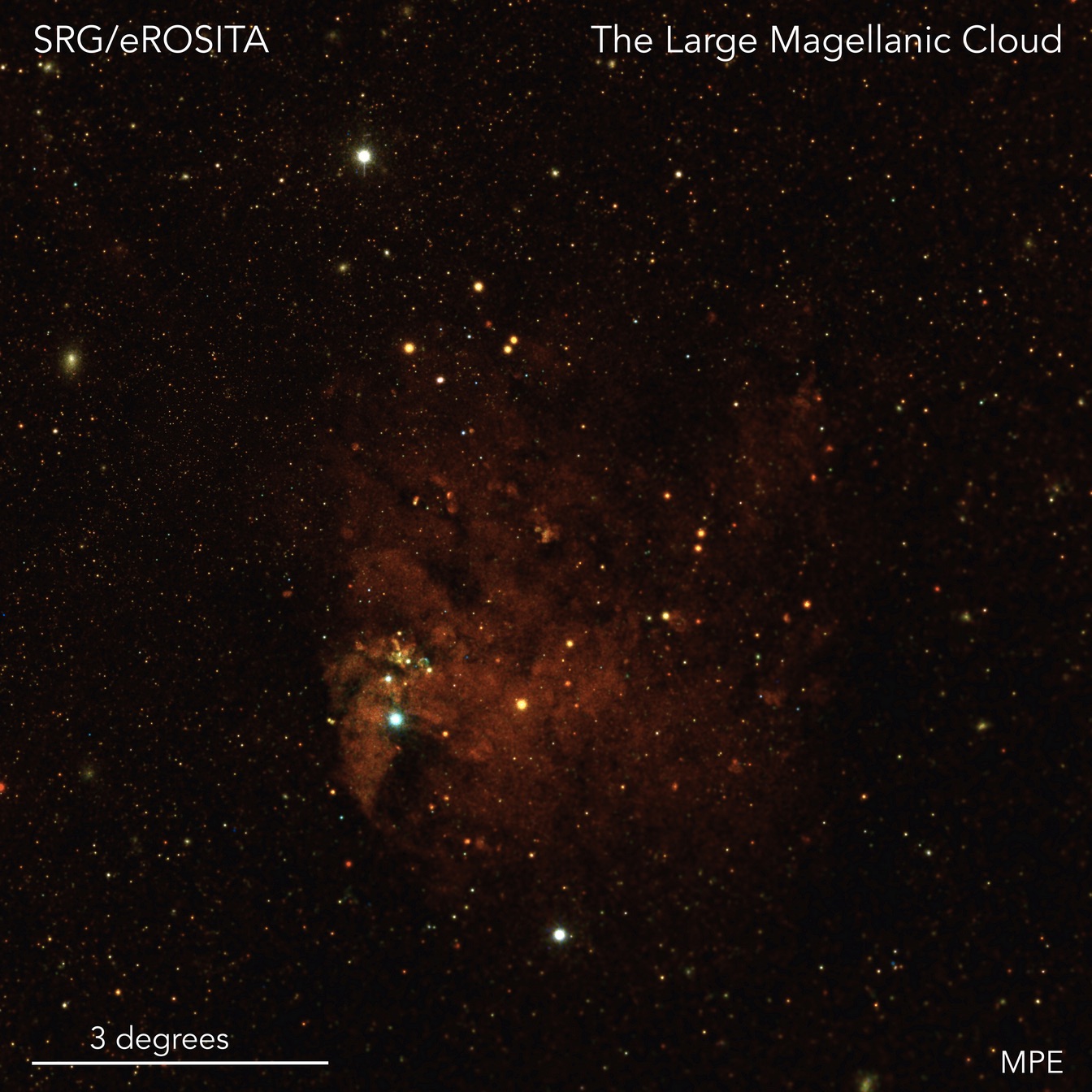IMPRS projects at MPE/HEG
|
The High Energy Astrophysics group at MPE has its major scientific emphasis on the study of extreme processes mostly via X-ray observations, but also extends to other wavebands. Our main astrophysical themes are: 1.) Large scale structure, as probed hot gas in clusters and groups of galaxies, and the related cosmological implications; 2.) The cosmic history of black hole growth and its relationship to galaxy evolution; 3.)Investigating physical processes including strong gravity around black holes and other compact objects; 4.) gamma-ray bursts. Research fields for which PhD projects are offered specifically for 2021 include: |
|
Studying the X-ray haloes of normal galaxies with eROSITA
The theory of galaxy formation predicts that the warm/hot circum-galactic medium (CGM) that virialize in the collapsing dark matter haloes should produce weak soft X-ray extended emission well beyond the stellar extent of the galaxies. The long cooling times of the CGM hot gas implies that they carry imprinted important informatio about feedback processes powered by the stellar populations of galaxies and their central supermassive black holes (SMBHs). eROSITA excellent soft X-ray sensitivity and survey capabilities will allow us to study, directly (imaging) or indirectly (stacking), the properties of the CGM haloes of tens of thousands of nearby galaxies. Studying the statistical properties of the X-ray haloes (temperature, luminosity, etc.) as a function of galaxy mass, morphology and star-formation rate will allow us to study the relics of feedback modes and energy injection into the CGM, testing predictions of complex galaxy formation models. Supervisors: A. Merloni, K. Nandra |
|
|
Title: Understanding supersoft X-ray sources with eROSITA observations
Supersoft X-ray sources (SSS) have been discovered as a new class of objects by ROSAT in the early 90ies. According to the standard model, a white dwarf (WD) accretes from a more massive donor on a thermal timescale, and the accretion rate is about equal to the rate of H burning on the WD surface. The number of detected sources is small, despite theoretical predictions about 100 times higher. eROSITA provides (i) better sensitivity than ROSAT, (ii) lower energy cutoffs and better spectral resolution than the imagers on Chandra, XMM, and Swift, and (iii) a longer survey coverage interval than ROSAT. Thus, eROSITA is expected to provide unique information relative to the ROSAT all-sky survey and the pointed observations over the last decade by Chandra, XMM, and Swift. In collaboration with a theory PhD in Tuebingen, this project aims at significantly pushing the frontiers of our knowledge about the supersoft source nature by combining (i) new X-ray observations of eROSITA and (ii) advanced modeling of the atmosphere of the hot WD and emission components from its accretion belt and irradiated accretion disk. Supervisor: J. Greiner |
|
|
A multi-wavelength study of supernova remnants and neutron stars
The PhD project is in the field of exploring stellar endpoints, e.g. supernova remnants and neutron stars. The candidate shall make use of various data from current radio, optical and high energy observatories(e.g. XMM-Newton, Chandra and Fermi). The PhD candidate shall take active part in the preparation of observing proposals for the current optical, radio and high-energy observatories and shall be familiar with the common data analysis tools. Typically, a PhD research project develops by its own during the course of the PhD. However, a starting point could be the identification campaign of SNR candidates. Identified radio supernova remnants (SNRs) in the Galaxy comprise an incomplete sample of the SNR population due to various selection effects. ROSAT performed the first All-Sky Survey (RASS) with an imaging X-ray telescope and thus provided another window for finding SNRs and compact objects that may reside within them. eROSITA (extended ROentgen Survey with an Imaging Telescope Array) is the core instrument on the Russian Spektrum-Roentgen-Gamma (SRG) mission launched in 2019. In the soft band (0.5-2 keV), it will be about 30 times more sensitive than ROSAT, while in the hard band (2-8 keV) it will provide the first ever true imaging survey of the sky. It supports to continue the previous SNR identification campaign and to search for new supernova remnants and neutron stars with a much higher sensitivity than was possible before. In the course of the PhD research the current identification campaign of SNR candidates and neutron stars shall be continued using existing multi-wavelength data from optical, radio search there will also be the possibility to look into the open questions on the internal structure of neutron stars, on the equation of state of super-nuclear matter, on the cooling of neutron stars as well as on their emission mechanisms for non-thermal radiation and on particle acceleration mechanisms in supernova remnants. Supervisor: W. Becker |

|
|
The modes of AGN feeback: radiative vs. kinetic
- To what extent, beyond the simple Fundamental Plane scaling, do lower-luminosity AGN display analogous behaviour as stellar mass black holes (i.e. state changes, hysteresis, etc.). - What is the role of kinetic feedback from powerful jets produced in high-accretion rate sources? Are those ‘radio-loud’ (or ‘jetted’) quasars signature of episodic ejections, or signposts of a specific sub-population of SMBH (those with high spin, for example). Supervisors: A. Merloni, K. Nandra |
|
Tracing the High Mass X-ray binaries and Supersoft sources in the Magellanic Cloud system with eROSITA
HMXBs are a unique astrophysical tool that provide insights into matter under extreme conditions and the physics of accretion onto highly magnetised neutron stars. The Magellanic Cloud system (MCS) covers nearly 200 square degrees on the sky and includes our nearest star-forming galaxies, thus providing a unique laboratory for a complete study of HMXBs. This PhD project aims to use data from eROSITA all-sky surveys to perform a complete and systematic study of the HMXB population of the entire MCS for the first time. The project will make use of the eROSITA data combined with early-type stars selected using near-infrared data from the VISTA survey of the Magellanic system as well as optical catalogs to systematically identify new HMXBs in the MCS. This will also include the identification of a rare class of Be-WD binaries which are luminous supersoft sources uncovered uniquely in the MCS. Optical spectroscopic follow-up opportunities for new candidates will be also available. Dedicated X-ray follow-up observations of new HMXBs discovered will be made using other facilities. The high observation cadence of the MCS provided by eROSITA will allow the study of long-term X-ray variability of these systems. Another aim will be to explore the relation between the HMXBs and the star formation history available from the VMC data to examine systematic differences between the clouds and their stellar content. Supervisors: C. Maitra, F.Haberl |

|
|
Cosmology and Structure Formation (Joint project with LMU/USM)
|
|
Studying Large Scale Structure of the Universe with eROSITA
|